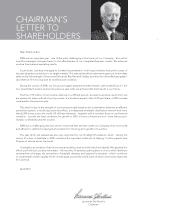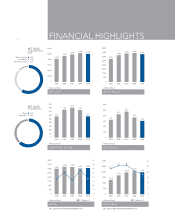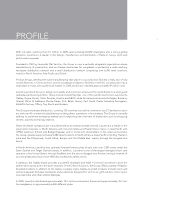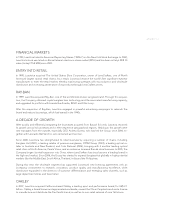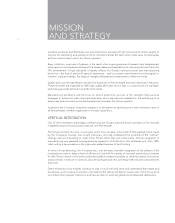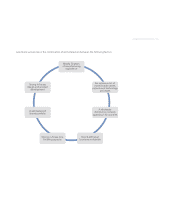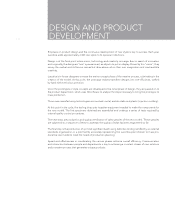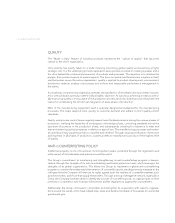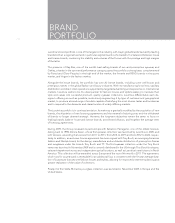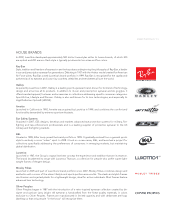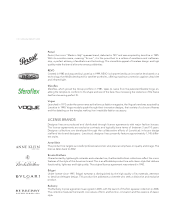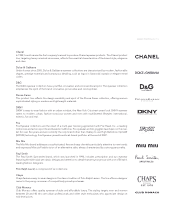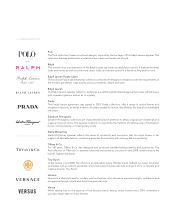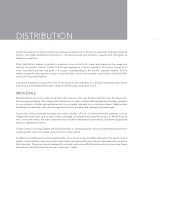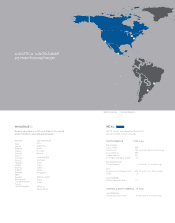LensCrafters 2009 Annual Report Download - page 17
Download and view the complete annual report
Please find page 17 of the 2009 LensCrafters annual report below. You can navigate through the pages in the report by either clicking on the pages listed below, or by using the keyword search tool below to find specific information within the annual report.
15 <
MANUFACTURING
Luxottica’s manufacturing system has two main platforms: Italy and China. Alongside these, the Foothill
Ranch facility in California (US) manufactures high performance sunglasses and prescription frames and
lenses and assembles most of Oakley’s eyewear products, while Oakley’s second manufacturing center
in Dayton, Nevada (US), produces the frames used in its X Metal® (a proprietary alloy) eyewear products.
Lastly, there is a small plant in India, serving the local market.
Luxottica has six manufacturing facilities in Italy: fi ve in northeastern Italy, the area in which most of the
country’s optical industry is based, and one near Turin. All of these facilities are highly automated, which has
made it possible to maintain a high level of production without signifi cant capital outlay.
Over the years, the Group has consolidated its manufacturing processes by concentrating a specifi c pro-
duction technology in each of the Italian facilities. This consolidation has enabled Luxottica to improve
both the productivity and quality of manufacturing operations.
Plastic frames are made in the Agordo, Sedico, Pederobba and Lauriano facilities, while metal frames are
produced in Agordo and Rovereto. Certain metal frame parts are produced in the Cencenighe plant. The
Lauriano facility also makes crystal and polycarbonate lenses for sunglasses.
The Dongguan plants, in China’s Guangdong province, make both plastic and metal frames.
In 2009, approximately 46 percent of the frames manufactured by Luxottica were metal-based, and the
remaining was plastic.
The manufacturing process for both metal and plastic frames begins with the fabrication of precision tool-
ing and molds based on prototypes developed by in-house designers and engineers. The Group seeks to
use its manufacturing capacity to reduce the lead time for product development and thereby adapt quickly
to market trends and contain production costs, as well as maintain smaller and more effi cient production
runs so as to better respond to the varying needs of different markets.
The manufacturing process for metal frames has approximately 70 phases, beginning with the production
of basic components such as rims, temples and bridges, which are produced through a molding process.
These components are then welded together to form frames over numerous stages of detailed assembly
work. Once assembled, the metal frames are treated with various coatings to improve their resistance and
fi nish, and then prepared for lens fi tting and packaging.
Plastic frames are manufactured using either a milling process or injection molding. In the milling process,
a computer-controlled machine carves frames from colored plastic sheets. This process produces rims,
temples and bridges that are then assembled, fi nished and packaged. In the injection molding process,
plastic resins are liquefi ed and injected into molds. The plastic parts are then assembled, coated, fi nished
and packaged.
Luxottica engages in research and development activities relating to its manufacturing processes on an on-
going basis. As a result of such activities, Luxottica has invested and will continue to invest in automation
and in innovative technologies, thus increasing effi ciency while improving quality.
In addition, Luxottica utilizes third-party manufacturers to produce Oakley apparel, footwear, watches and
certain accessories.
OPERATIONS


